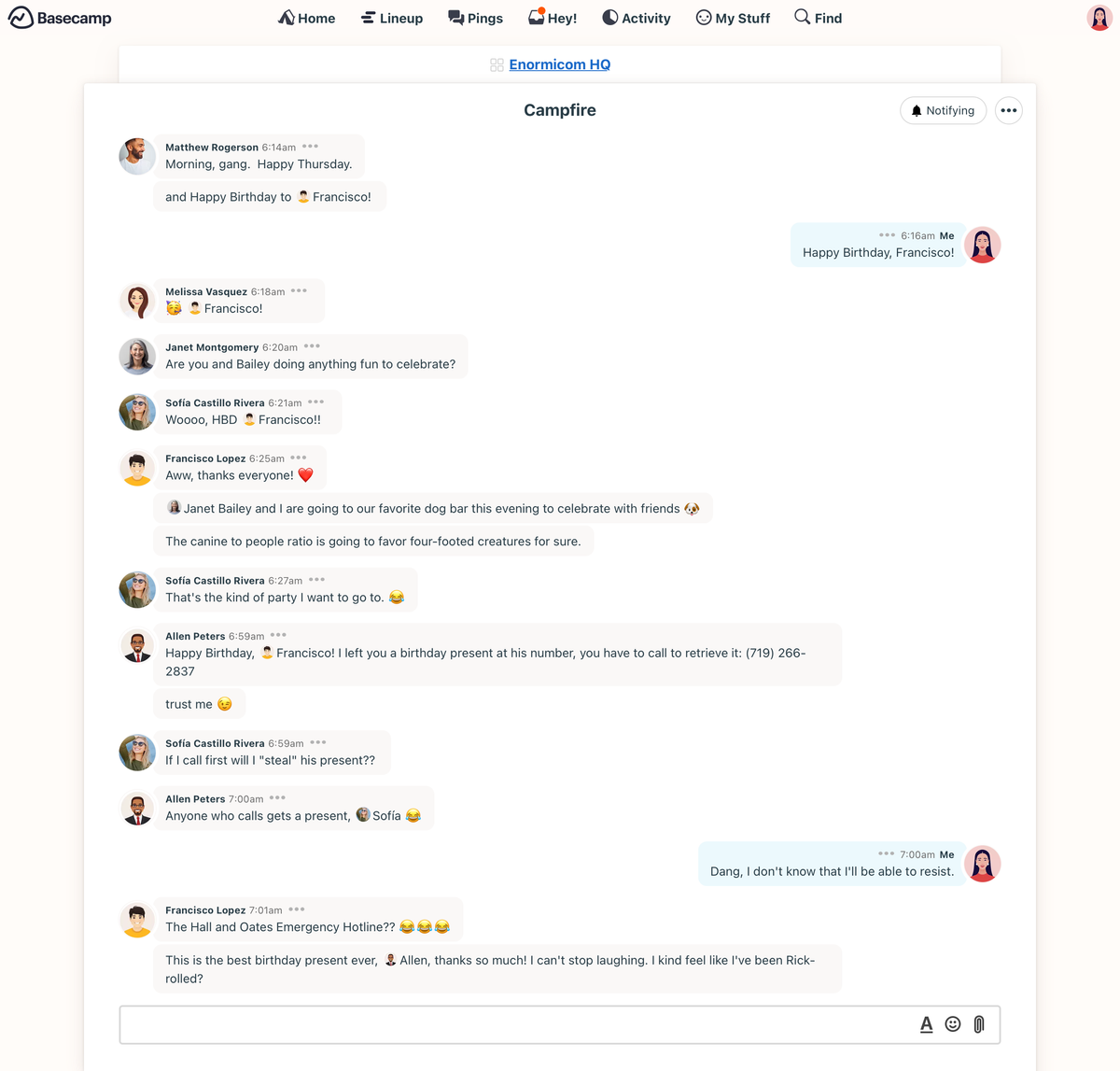New in Basecamp: Still too Many Clicks
Basecamp's apps have, and continue to be, incredibly mouse dependent.

From 37signals.com:
By popular demand, we recently rolled out two great improvements for Campfire chats and Pings in Basecamp.
Now you can directly reply to anything that was said in a Campfire chat or a Ping by hovering over the original line, clicking the ••• menu, and selecting the “Reply” option.
This is two clicks, which is two clicks too many.
Our team used to be all-in with Basecamp, and HEY, Basecamp's take on email. But their apps have, and continue to be, incredibly mouse dependent.
Since switching back to Superhuman for email, we have grown too accomsted to, and satisfied with, keyboard-first navigation, to go back to an app that's this depdendent on mouse clicks.
In fact, the primary reason we switched back to Twist from Basecamp was because Twist made keyboard navigation a tentpole feature of their 2.0 release late last year. From the release notes:
The faster you can catch up on team communication, the more time you can reclaim for focused work. That’s why we invested in bringing complete keyboard support to Twist. You can now zip around the app without ever touching your mouse.
Type ? to pull up a cheat sheet of all the new keyboard shortcuts. (A Doist team favorite is hitting the E key to mark threads done all the way to Inbox Zero.)
Yes, Basecamp and HEY do support some keyboard shortcuts. With an emphasis on some. But, Basecamp's shortcuts are idiosyncratic and don't conform to established norms. For instance, in most email clients 'a' is the shortcut for reply all. One could jump from email app to email app, hit 'a,' and it almost always starts a reply all chain. But, in HEY, hitting 'a' moves the email to a "set aside" pile.
I could go down the list.
Here's my point. We actually dig Basecamp. There's a lot of features we miss by not using Basecamp. But the puck is skating solidly towards keyboard shortcuts and command palettes, and our team can't commit to any app now if everything takes just two clicks.
Also from Basecamp's annoucement:
What’s especially useful about Boosts is that they don’t send notifications to everyone in the room — they’re quiet ways to respond. Everyone can see the Boost, but no one is interrupted or distracted. Only the original poster would get a note in their Boost report. So Boosts are a great way to send a thanks, or acknowledge someone’s comment, without sending out notifications to everyone else.
This is perfect. Everyone sees the boost, but only the original poster gets the alert. Slack could learn from this.





